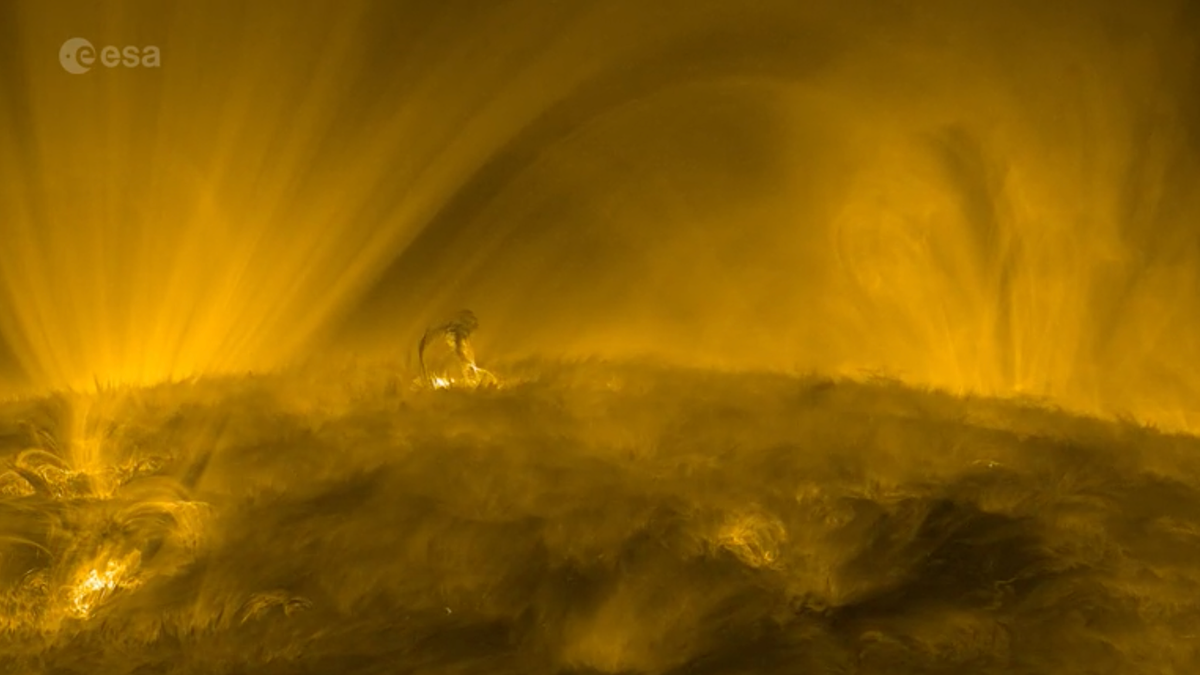Insightful Close-Up Views of the Sun’s Corona Revealed by Solar Orbiter
The recent total solar eclipse on April 8 provided an exceptional opportunity to observe the Sun’s corona, including captivating prominences. However, a groundbreaking video captured by Europe’s Solar Orbiter is presenting some of the most detailed and stunning close-up visuals of our celestial body.
Exceptional Close-Up Footage from the Solar Orbiter
The remarkable video, filmed on September 27, 2023, by the Extreme Ultraviolet Imager (EUI) instrument aboard the European Space Agency’s Solar Orbiter, offers an impressive perspective of the Sun from a remarkably close distance, as described in a press release by ESA.
Positioned at approximately 0.33 astronomical units (AU) from Earth to the Sun, Solar Orbiter has ventured closer to the Sun than Mercury’s average proximity of 0.39 AU. This spacecraft is on course for an even closer encounter, nearing a minimum distance of 43 million kilometers (0.287 AU) from the Sun on October 7.
Deep Dive into the Sun’s Corona
The video showcases a dynamic and intricate stellar environment, vividly illustrating the transition from the Sun’s lower atmosphere to its significantly hotter outer corona. The footage reveals plasma structures resembling wispy, hair-like formations, unveiling magnetic field lines emanating from the Sun’s core.
ESA notes that the brightest regions in the video exhibit temperatures reaching approximately one million degrees Celsius, while darker areas signify radiation absorption zones.
ESA has also released an annotated version of the video, elucidating various features. For example, the intricate patterns of bright gas called coronal “moss” are visible in the lower left corner, often surrounding unseen large coronal loops.
Furthermore, the video captures towering gas spires known as spicules extending up to 6,214 miles (10,000 kilometers) from the Sun’s chromosphere. Additionally, a small eruption larger than Earth is detected at the 22-second mark, demonstrating the lifting and falling of cooler material.
Coronal rain, alongside erupting plasma streams, can also be observed in the video, painting a mesmerizing picture of the Sun’s remarkable activity.
Collaborative Solar Research
On the same day of recording, NASA’s Parker Solar Probe ventured within 4.5 million miles (7.26 million kilometers) of the solar surface, studying particles and the magnetic field in the Sun’s corona and solar wind. This collaborative effort allowed ESA’s Solar Orbiter to observe the source region of the solar wind, subsequently studied by Parker.
The convergence of these initiatives underscores the fervent pursuit of solar exploration by dedicated scientists, keen on unraveling the mysteries of our luminous star.
For further insights into space exploration, follow our spaceflight updates on X and explore Gizmodo’s comprehensive Spaceflight section.
Image/Photo credit: source url





